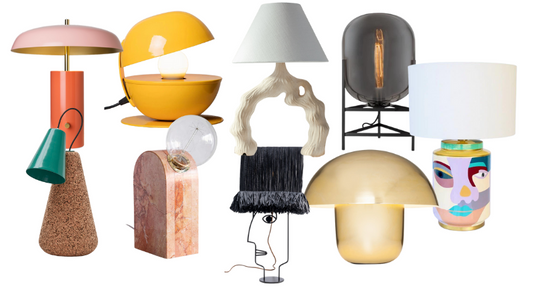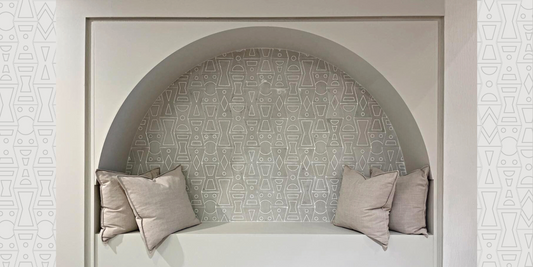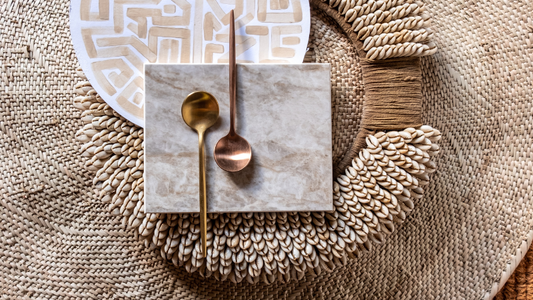Let’s break down different types of lighting and I’ll show you how they can be used in one of my interior design projects.
Picture this. You’re getting ready to go on a date, you haven’t been on one in a while and with the connection you feel to this person, it has to be something special. You put a lot of effort into your appearance, you feel good, you smell great and your skin is almost tingling with excitement. You arrive at the restaurant, a little early, but that’s not ‘cool’, so you sit at the bar and order a drink. The lighting is soft, warm and moody. You feel mysterious and sexy. Everyone around you looks beautiful and there is an alluring atmosphere in the air.Ok, now imagine you sat at the bar under sharp, white, brightly burning lights. Not quite the same, hey?
The first thing we feel when walking into a room is the lighting. It can make or break the atmosphere of any space. From natural light flooding through big windows, to LED overhead lights to sculptural pendant lights, each is meant for a different purpose and has a unique effect on us. This applies to your home too, not just to high-end restaurants or bars. Let me show you some examples of how to create your own desired lighting effects in your home using a combination of functionality and aesthetics. Let’s start with functionality, as Louis Sullivan said, ‘form follows function’.

Lighting is one of the most important elements in interior design. Every room should have a mix of lighting, including general lighting, accent and task lights. There are endless choices and styles, so deciding on what to buy can be tricky. A lot of people overlook choosing lighting when decorating their home (don’t be that person), but it’s one of the first things a guest will notice when walking in.
I’ve designed an interior project using a common shared space layout that can be found in many developments. It will help us delve into lighting and show examples of products in use that are available through Gerieflijk. Each space within the open plan room has a mix of the main types of lighting. Let’s break down what these main types are and why we need them.
General Lighting

Ambient or general lighting is built into most houses, apartments or townhouses. The function of these lights is to illuminate an entire space uniformly. When you flip a wall switch at home, you're almost certainly turning on this kind of lighting. Since moving recessed lights, bulkheads or track lighting requires renovation plans, a builder, and expert help from an electrician, we're going to focus on lighting that you can easily chop and change at home, like pendants, wall sconces, floor lamps or table lamps.
Task Lighting

As the name suggests, task lighting is directed toward a specific area to give more detail to objects. Definitely consider function over form at first. Think of a floor lamp next to a cozy couch in your reading nook, a table lamp on your home office desk or the popular under cabinet lighting in your kitchen. Rooms that need task lighting are kitchens, bathrooms, living rooms and home offices.
Accent Lighting

Used to add visual interest to an object or area, accent lights are usually pendants or wall sconces and definitely add drama to a space, even during the daytime. They can be sculptural in form and make your guests go 'damn' when they walk into the room. Consider what you'd like to highlight; artworks, sculptures, plants, bookcases, anything you love and want to draw attention to. Your living room, dining room and perhaps even bedroom can all have accent lighting.
Often the three do overlap, and as a design lover, this is where your personal taste comes into play. Once you've considered function, you can have all the fun in the world when it comes to the shape, size and brightness of a lighting fixture. Knowing the main lighting fixture types can help you make a more considered purchase.
Pendants
Your focal lighting fixture should be in the centre of the room, or be the first thing you see when you enter a space. If you do want to use a pendant as a feature, make sure you pair it with more subdued task lights. If there is a lot going on lighting wise, that showstopper piece you love might not make as much of an impact.
An Afrimodern pendant from Modern Gesture above the dining room table creates a moment of theater as you enter the apartment.

Wall Sconces
Commonly used to direct light up or down, wall scones have evolved in design to offer pivoting as well. You can use wall sconces as accent or task lighting depending on their placement. Get creative with their form, colour and finishing as these fixtures can be sculptures in their own right.
Two minimalist, swivelling wall sconce pendants from Hoi P’loy serve to create ambient lighting, but also provide task lighting for artworks or flower arrangements.

Table or Desk Lamps
Your portable light fixtures can, you guessed it, move around. This is a huge benefit because you might buy different furniture or move to a new home, and these light fixture can adapt to your new space. By using tall floor lamps and short table lamps, you can create varying heights of lighting, casting interesting shadows, creating drama and often also serving as way finding when all your general lighting is turned off.

A tall, multi purpose floor lamp from Nancy Designs gives just the right amount of lighting at a great height.
Other Lighting Elements
When it comes to creating an atmosphere, there are a few light sources you might not have considered, but that greatly affect your mood. Take advantage of natural light where you can as this has a positive effect on your health and well-being. Mirrors are beautiful objects that reflect daylight into our homes and are a powerful way to make your room appear more spacious. Candles are a great way to create soft, sensual light, and fairy lights or string lights create a playful atmosphere and don’t have to look kitsch if you use them well.
The Arch mirror from Palmy Living brings daylight further into your space. The Hurricane candles from Native Decor will create perfect lighting for a date night.

The last, but probably the most important, element to consider when deciding on lighting is the brightness and colour of your bulbs. Choose LED lights where possible as these are energy saving, and can last for years too! This is a completely personal choice, however, it wouldn’t be fair if I didn’t give you some advice, especially on lighting colour.
Light Colour
Warm Light bulbs have a yellow undertone and a lower number (around 3000K), this is perfect for bedrooms and living rooms to give you a cozy feeling.
Neutral Light bulbs are a more white tone and are around 4000K. Neutral bulbs are best for areas like kitchens, bathrooms or offices.
Daylight Light bulbs are bright and as close to midday sun as you can get (around 6000K). This is great for task lighting like reading lamps or desk lamps, pendants in kitchens and bathroom task lighting.





